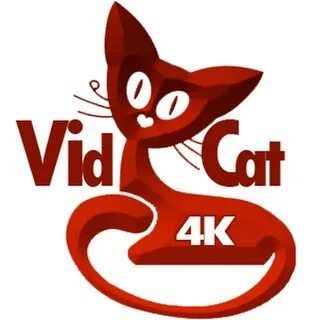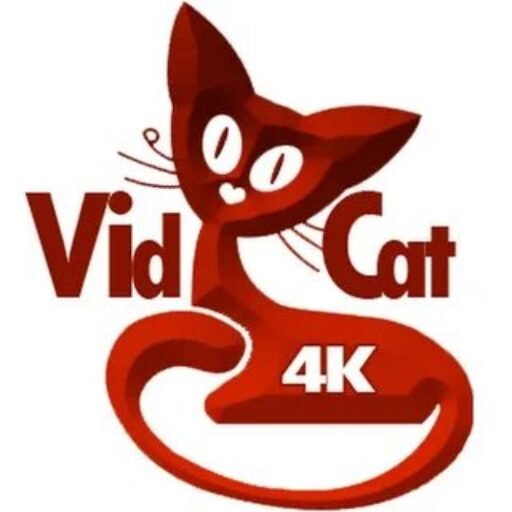Video streaming platforms have revolutionized the way people consume entertainment, offering instant access to a vast library of movies, TV shows, documentaries, and live broadcasts. Services like Netflix, Amazon Prime Video, Hulu, and Disney+ provide on-demand content that can be watched anytime, anywhere, on various devices. This flexibility has made streaming a preferred choice over traditional cable TV, appealing to both casual viewers and dedicated binge-watchers.
The growth of streaming platforms has also fueled fierce competition, leading to an explosion of original content and improved viewing experiences. With advancements in AI recommendations, high-definition streaming, and mobile compatibility, audiences enjoy personalized entertainment. However, increasing subscription costs and content fragmentation have raised concerns about affordability and accessibility.
content table
| Section No. | Heading (Keyword) | Word Count | Summary |
| 1 | Video Streaming Platforms | 100 | Overview of how streaming platforms transformed entertainment viewing. |
| 2 | Video Platforms for Business | 100 | Business use cases for video platforms in marketing and communication. |
| 3 | White Label Video Streaming Platform | 100 | Benefits and potential of launching branded streaming services. |
| 4 | Video Marketing Tools | 100 | Tools that help businesses create and distribute video content. |
| 5 | Best VOD Service | 100 | Features that make a VOD platform stand out in the market. |
| 6 | Enterprise Video Content Management | 100 | Managing corporate video libraries securely and efficiently. |
| 7 | VOD Internet | 100 | How internet access drives on-demand video services. |
| 8 | Corporate Video Broadcasting | 100 | Broadcasting corporate content for internal and external audiences. |
| 9 | Video Host | 100 | Choosing the right hosting service for professional video delivery. |
| 10 | Subscription Video on Demand | 100 | Subscription model benefits for streaming services. |
| 11 | Videos on Websites | 100 | How embedded videos boost engagement and conversions. |
| 12 | Personalized Videos for Customers | 100 | Tailored video experiences to increase engagement and loyalty. |
| 13 | Conclusion | 100 | Final insights on using video to grow business communication. |
Video Platforms for Business
Video platforms for business have become essential tools for communication, marketing, and collaboration in today’s digital landscape. Companies use services like Zoom, Microsoft Teams, Vimeo, and YouTube to host webinars, share training materials, and showcase products. These platforms enable organizations to reach global audiences, enhance brand visibility, and improve customer engagement. Features such as live streaming, analytics, and secure file sharing make them valuable for both internal and external purposes. With remote work on the rise, video platforms help maintain productivity and connection. Businesses leveraging these tools gain a competitive advantage through effective visual communication and scalable outreach strategies.
High Potential of White Label Video Streaming Platforms
A white label video streaming platform allows businesses to launch their own branded streaming service without building technology from scratch. This solution offers high potential for companies aiming to control user experience, content distribution, and monetization. Industries like education, fitness, entertainment, and corporate training benefit from tailored features such as custom branding, subscription models, and analytics. As video consumption grows, white label platforms help businesses stand out with unique designs and specialized content offerings. The ability to own customer data and maintain full control over platform functionality makes this model a powerful, scalable, and profitable option in the streaming industry.
Video Marketing Tools
Video marketing tools empower businesses to create, edit, optimize, and distribute engaging video content that drives audience engagement and sales. Platforms like Canva, Animoto, Vidyard, and Wistia help marketers produce professional-quality videos without requiring advanced technical skills. These tools often include features such as templates, video hosting, analytics, and integration with social media and email marketing platforms. By leveraging video marketing tools, companies can deliver compelling product demos, customer testimonials, and educational content. As video remains one of the most effective digital marketing formats, using the right tools ensures businesses can maximize reach, boost conversions, and strengthen their brand presence.
Best VOD Service

The best VOD (Video on Demand) service offers a seamless combination of content variety, streaming quality, and user experience. Leading platforms like Netflix, Amazon Prime Video, Hulu, and Disney+ dominate the market with extensive libraries and exclusive originals. A top VOD service provides flexible subscription plans, multi-device compatibility, and personalized recommendations powered by AI. Viewers expect fast load times, high-definition playback, and minimal buffering. The best services also support offline viewing, parental controls, and multiple user profiles. In a competitive streaming landscape, a superior VOD platform stands out by consistently delivering engaging, accessible, and affordable entertainment to a global audience.
Enterprise Video Content Management
Enterprise video content management (EVCM) systems enable organizations to securely store, organize, and distribute video content across internal and external channels. These platforms help businesses manage training videos, corporate communications, webinars, and marketing assets in a centralized, searchable library. Solutions like Kaltura, Panopto, and Brightcove offer features such as access control, analytics, and integration with collaboration tools. EVCM enhances productivity by ensuring employees can easily find and share relevant videos while maintaining compliance and security standards. As video becomes a core communication medium, enterprise video content management plays a crucial role in streamlining workflows and maximizing the value of video assets.
VOD Internet
VOD internet services allow users to stream or download video content on demand through an internet connection, eliminating the need for scheduled broadcasts. Platforms like Netflix, Amazon Prime Video, and YouTube leverage high-speed internet to deliver movies, TV shows, and live events instantly across multiple devices. The rise of broadband and mobile data has fueled the popularity of VOD, enabling viewers to watch anytime, anywhere. Advanced streaming technology ensures smooth playback, even in varying network conditions. As internet infrastructure continues to improve globally, VOD internet services are becoming more accessible, offering greater convenience, content variety, and personalized viewing experiences for audiences.
Corporate Video Broadcasting
Corporate video broadcasting enables businesses to share live or pre-recorded video content with employees, stakeholders, and customers in real time or on demand. It is widely used for company announcements, product launches, training sessions, and investor updates. Platforms like Vimeo Enterprise, Microsoft Stream, and Brightcove provide secure streaming, audience analytics, and branding customization. This technology strengthens internal communication, boosts engagement, and ensures consistent messaging across global teams. With features like multi-device accessibility and high-definition streaming, corporate video broadcasting offers a professional way to connect and inform. As remote work grows, it becomes a vital tool for corporate transparency and collaboration.
Video Host
A video host is a platform or service that stores, streams, and delivers video content to audiences worldwide. Businesses, educators, and creators use video hosting services like Vimeo, Wistia, and YouTube to showcase tutorials, marketing videos, or entertainment content. A reliable video host ensures fast load times, high-quality playback, and compatibility across devices. Advanced features may include customizable players, password protection, analytics, and integration with websites or apps. Choosing the right video host is essential for branding, audience engagement, and monetization. As video consumption grows, professional hosting solutions provide scalability, security, and seamless viewing experiences that meet modern digital demands.
Subscription Video on Demand
Subscription Video on Demand (SVOD) is a streaming model where users pay a recurring fee to access a vast library of content anytime, without limitations on viewing frequency. Popular platforms like Netflix, Disney+, and Amazon Prime Video thrive on this approach, offering exclusive shows, movies, and original productions. SVOD provides flexibility, allowing viewers to watch on multiple devices with personalized recommendations. For businesses, it offers predictable revenue and customer loyalty through high-quality, regularly updated content. As competition intensifies, SVOD platforms differentiate themselves through niche content, innovative features, and global reach, making them a dominant force in the evolving digital entertainment landscape.
Videos on Websites
Videos on websites enhance user engagement, convey information quickly, and improve overall visitor experience. Businesses and creators use embedded videos for product demonstrations, testimonials, tutorials, and brand storytelling. Platforms like YouTube, Vimeo, and Wistia make it easy to host and integrate videos seamlessly into web pages. Well-placed videos can boost conversion rates, increase time spent on site, and improve search engine rankings through rich media content. Optimizing videos for fast loading, mobile responsiveness, and accessibility ensures a smooth viewing experience. In today’s competitive digital space, using videos on websites is a powerful way to capture attention and deliver impactful messages.
Personalized Videos for Customers
Personalized videos for customers use tailored content to create a unique and engaging viewing experience based on individual preferences, behavior, or demographics. Businesses leverage this approach for marketing, onboarding, product recommendations, and customer support. By incorporating elements like the customer’s name, relevant offers, or usage data, brands can increase engagement and conversion rates. Platforms such as Vidyard, Idomoo, and Pirsonal enable scalable creation of personalized videos with automation tools. This strategy fosters stronger emotional connections, enhances customer satisfaction, and builds loyalty. As consumers seek more relevant interactions, personalized videos stand out as a powerful tool in modern customer communication.
Conclusion
The rapid growth of video technology has transformed how businesses communicate, market, and engage with their audiences. From VOD services and white label platforms to corporate broadcasting and personalized customer videos, each innovation offers unique opportunities for brand visibility, customer retention, and revenue generation. As internet speeds improve and user expectations evolve, companies that strategically integrate video into their operations gain a significant competitive edge. By leveraging the right tools, hosting solutions, and content strategies, organizations can deliver impactful, high-quality video experiences that resonate with viewers, strengthen relationships, and drive long-term success in the digital-first business landscape.




